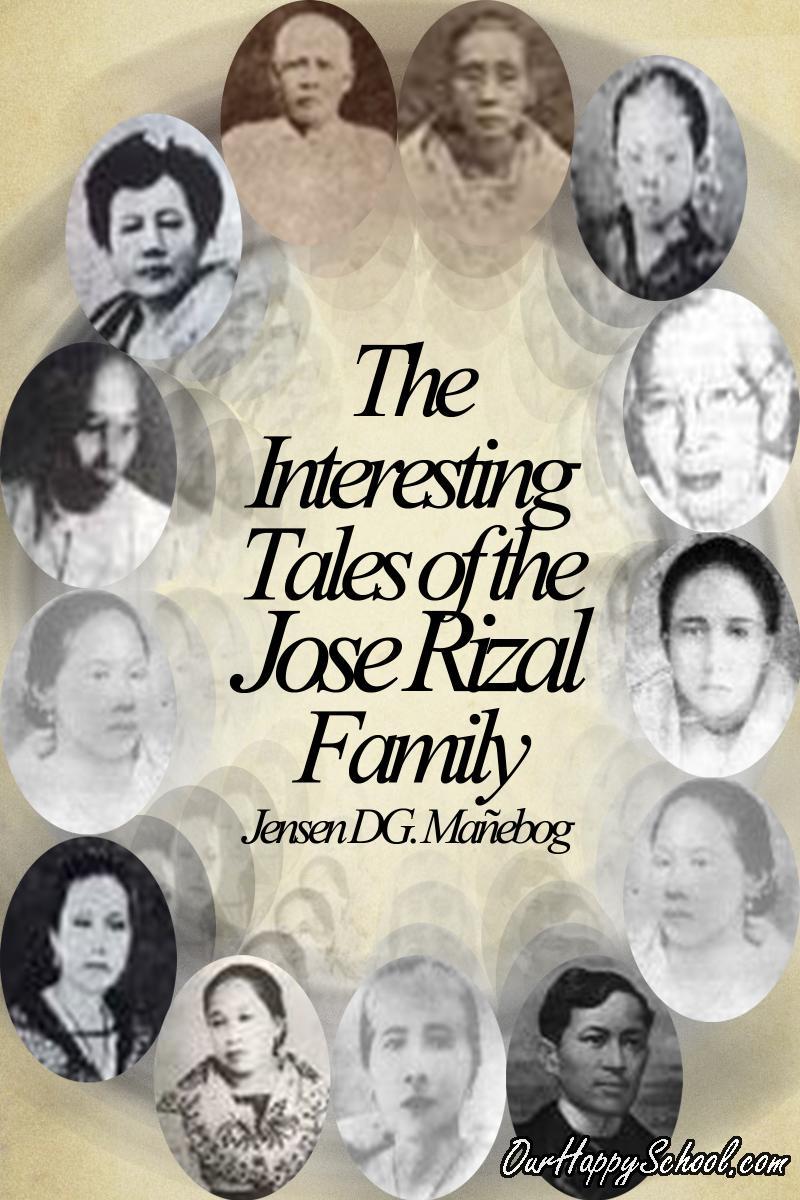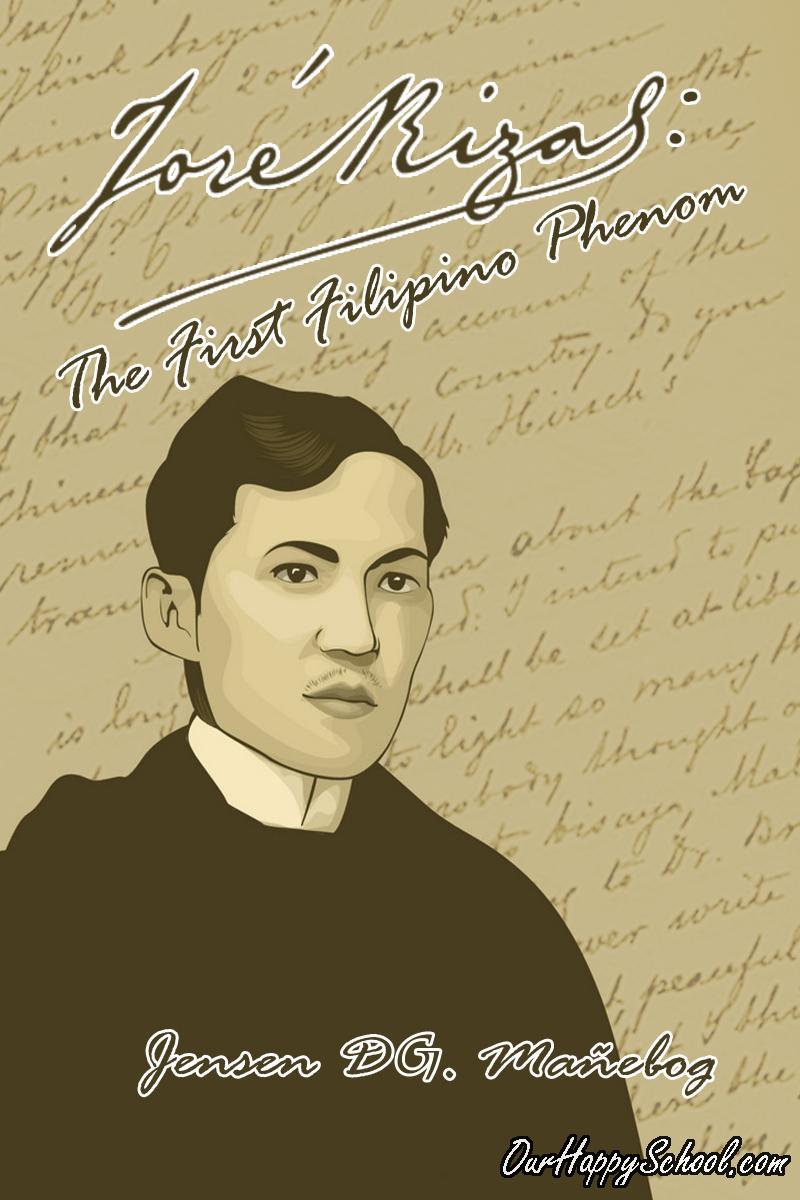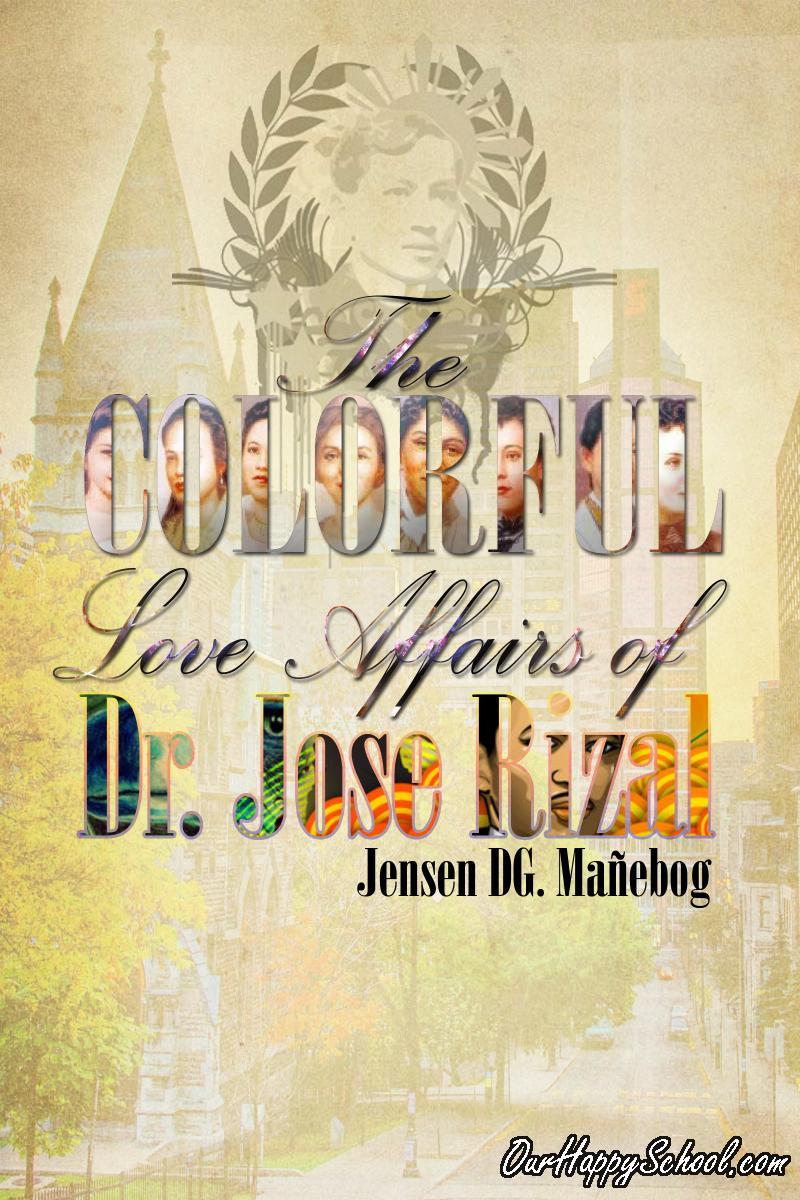Sponsored Links
Teodora Alonzo: Jose Rizal's Mother
TEODORA ALONZO © 2013-present by Jensen DG. Mañebog
IF INTERNET’S SOCIAL MEDIA were already existing during the Philippine-American War, and somebody had posted the famous picture of the aged Doña Teodora Alonso next to the excavated skull of the national hero, there might have been an online pandemonium which could have surpassed the Black Pink's record. Some consider the picture morbid, but others regard it as an indubitable manifestation of the mother’s intense love for her son.
The Rizal Home
Doña Teodora Alonzo y Quintos is the homemaker of the first massive stone house, or ‘bahay na bato’, in Calamba,which is the very birthplace of the national hero. It was a rectangular two-storey building, built of adobe stones and solid woods, with sliding capiz windows. Its ground floor was made of lime and stone, the second floor of hard woods, except for the roof, which was of red tiles. There was an azotea and a water reservoir at the back. The courtyard contained tropical fruit trees, poultry yard, a carriage house, and a stable for the ponies. Its architectural style and proximity to the church implied the owners’ wealth and political influence.
The author's free e-book on Jose Rizal's Family
Rizal’s ancestral house was destroyed during World War II. Juan Nakpil supervised its reconstruction and restoration as ordered by President Quirino. With funds mainly contributed by Filipino school children, this Jose Rizal Shrine was inaugurated in 1950.
It is said that the only surviving feature of Rizal’s original house is the deep well that has become a ‘wishing well’ for many tourists. Even the house’s familiar white color was not preserved for it was repainted a pale shade of green. Nonetheless, many Rizal ‘relics’, including the supposed black coat worn by Rizal during his execution, can be found in the shrine.
Unknown to many, Doña Teodora—together with her husband—is buried near the narra tree about 20 meters away from the shrine’s ‘wishing well.’ For long, this historic Calamba house was tended and managed by Jose’s mother also known as ‘Lolay’.
Common biographies state that Doña Teodora Alonso Quintos Realonda was born on November 8, 1826 in Santa Cruz, Manila and baptized in Santa Cruz Church. Strangely however, the volume in the church books that supposedly contains Teodora’s baptismal records is the only one missing in the otherwise complete records down to the eighteenth century (Ocampo, p. 39). Asuncion Rizal-Lopez Bantug, the granddaughter of Jose’s sister Narcisa, distinctively claims that Lola Lolay and her all siblings were born in Calamba, but (just) lived in Manila (Bantug, p. 18).
Doña Lolay was educated at the College of Santa Rosa, an esteemed school for girls in Manila. She was usually described asa diligent business-minded woman, very graceful but courageous, well-mannered, religious, and well-read. Very dignified, she disliked gossip and vulgar conversation. Possessing refined culture and literary talents,she influenced her children to love the arts, literature, and music. Herself an educated woman, Lolay sent her children to colleges in Manila.
To help in the economy of the family, she ran sugar and flourmills and a small store in their home, selling home-made ham, sausages, jams, jellies, and others. Looking back, her business in a way predated the meat processing commerce of the Pampangueños today and the ube jam production of some nuns in Baguio.
Doña Teodora‘s ancestry
It is believed that Doña Teodora’s family descended from Lakandula, the last native king of Tondo. (For young generations, Lakandula has to be distinguished from the unofficial ‘Hari ng Tondo’, Asiong Salonga, the Manila kingpin who was immortalized in the movie incidentally by Laguna’s own governor E. R. Ejercito.)
Lolay’s great-grandfather was Eugenio Ursua (of Japanese descent) who married a Filipina named Benigna. Regina, their daughter, married a Filipino-Chinese lawyer of Pangasinan, Manuel de Quintos. Lorenzo Alberto Alonso, a well-off Spanish-Filipino mestizo of Biñan, took as his ‘significant other’ Brigida Quintos, daughter of Manuel and Regina Quintos. The Lorenzo-Brigida union produced five children, the second of them was Jose Rizal’s mother, Teodora Alonso Quintos.
Through the Claveria degree of 1849 which changed the Filipino native surnames, the Alonsos adopted the surname Realonda. Rizal’s mother thus became Teodora Alonso Quintos Realonda.
Among Teodora’s siblings—Narcisa, Teodora, Gregorio, Manuel, and Jose—it was the youngest, Jose Alberto, who became the most historically significant to the Rizal family. Jose Alberto, the illustrious engineer of Biñan, studied in a British school in Calcutta, India. It is said that he exerted a good influence on the young Rizal, particularly inspiring him to cultivate his artistic talents.
Jose Alberto is diversely referred to as brother, cousin, half-brother, or stepbrother of Teodora Alonso, depending on the biographer you are reading. This is now clarified by the unearthed information that even before Lorenzo Alberto Alonso (Teodora and Jose Alberto’s father) took Brigida as his better half, he “had married a 12-year old Ilocana named Paula Florentino in 1814” (Ocampo, 2013, p. 38).
Those who declare that Jose Alberto is Teodora’s half-brother thus seem to imply that Jose Alberto was from the Florentino lineage and therefore the only legal son of Lorenzo Alberto.
However, a document written by Rizal himself, now being kept at the Rizal Library in Ateneo de Manila University, plainly reveals that Jose Alberto and Teodora Alonzo are of the same parents. Moreover, Lorenzo Alberto Alonso’s marriage to the 12-year old girl from Vigan—which was by a fixed marriage—did not produce any child.
Dr. Bimbo Sta. Maria, an officer of Biñan-based organization, United Artists for Cultural Conservation and Development (UACCD) believes that the half-brother issue was part of the family’s plan to keep its ties with the Spanish government (“Mga Lihim ng Pamilya ni Rizal”). Researching about Rizal’s family for many years, Sta. Maria had known that Lorenzo Alberto was conferred the title “Knight of the Order of Queen Isabella the Catholic” for supporting the Dominicans in their missions in Indo-China. The title was transferable to one of his legal children after his death.
However, all his children by Brigida Quintos (including Teodora Alonzo and Jose Alberto) were all illegitimate in papers. To receive the influential title, Jose Alberto, with the approval of his siblings, thus declared himself the legitimate son of Lorenzo Alberto and Paula Florentino, in effect disowning his real mother.
If Sta. Maria’s theory is correct, then the controversial 200-year old mansion in Biñan should at least be considered by the government as a historical landmark for being the ancestral house of Teodora Alonso’s family. As of this writing, the mansion is being demolished for plans of making the place commercial.
Doña Teodora’s imprisonments
When Rizal was just about to go to Manila to continue his education at the Ateneo, an ordeal occurred to his family—his mother was thrown into prison.
Jose Alberto, Lolay’s ‘favorite’ brother, had returned from Europe and found that her wife, Teodora Formoso,left their home and children for another man. He planned to divorce her, but Doña Teodora persuaded the couple to reconcile so as to avoid family scandal. Alberto’s wife however sued her husband for allegedly trying to poison her and incriminated Dona Teodora as his co-conspirator.
Alberto’s wife was aided by the Spanish lieutenant of the Guardia Civil. Remarkably, the Calamba’s gobernadorcillo, Antonio Vivencio del Rosario, was hasty to believe the charge. The two officials were frequent guests at the Rizal home but both had been nursing grudges against the Rizals. At one occasion, Rizal’s father could not accommodate to give fodder for the lieutenant’s horse. The gobernadorcillo, on the other hand, is said to have felt insulted that he had not been shown any greater respect than the Filipino guests in his visits to Rizal home.
Barbara Cruz-Gonzalez, great granddaughter of Rizal’s sister, Maria, shared one detailed version of the ‘poisoning’ accusation based on the tales that circulate in the involved clans (“Mga Lihim ng Pamilya Ni Rizal”). She narrated that Jose Alberto, upon discovering his wife’s infidelity, locked Teodora Formoso in a room in the historically controversial mansion in Biñan, and asked her sister Teodora to watch over his wife. One day, Teodora Alonso brought some food to Formoso which the latter refused to eat. Formoso instead fed it to her dog. Allegedly, the dog eventually died after eating the food. Hence, with the help of a leader of the Guardia Civil, who was purportedly Formoso’s lover, Jose Alberto’s wife had sent Teodora Alonso to prison.
Rizal’s mother was imprisoned in Santa Cruz, the capital of Laguna. It is said that the Rizals appealed to the Supreme Court, which ordered her immediate discharge. But she was rearrested by the order of the insulted judge, stating that Rizals’ appeal to the Supreme Court was contempt of his court. The Supreme Court irrationally upheld this contention. Some other fabricated charges were filed against her, hence she languished behind bars for about two and a half years in the 1870s.
Teodora Alonsowas imprisoned for the second time in the 1880s on the nonsense charge that she did not call herself a ‘Realonda de Rizal’ but simply ‘Teodora Alonso’. Concerning this, Rizal bitterly recorded: “From Manila they sent her to Sta. Cruz, Laguna Province, through mountains from town to town … Imagine an old woman of 64 traveling through mountains and highways with her daughter under the custody of the civil guard. When my mother and sister, after four days of traveling, arrived at Sta. Cruz, the governor, deeply touched, released them.” (Epistolario Rizalino, Vol. V, Part II, p. 621.)
Teodora’s long walks
In both imprisonments, Rizal’s mother was forced to walk rough roads before being locked up in the prison cell in Santa Cruz, Laguna. When she was incarcerated for the first time, some histories claim that she did a gruesome 50-kilometer walk, while others state ‘16 kilometers’. So why is there a discrepancy? Which figure is plausible?
Online distance calculators today indicate that Calamba is 43-kilometer away from Santa Cruz, suggesting that the ‘50 kilometers’ claim is more plausible. But that is if the walk was really from Calamba to Santa Cruz. Because a relative of Teodora Alonso,Jacoba Faustina-Cruz, narrated that the forced walk was only from Biñan to Calamba (as quoted by Ocampo, 2010, Philippine Daily Inquirer).
Thus, if Cruz’s statement is true, then the ’16 kilometers’ claim is more reasonable. Biñan and Calamba are 15.2465035627 kilometers away from each other, according to a modern mobile phone’s application.
Concerning the second time Teodora was imprisoned, Rizal’s descendants claim that the then half-blind Teodora Alonso was ordered to walk ‘85 kilometers’ from Manila to Santa Cruz (Bantug, p. 100). Modern distance calculators suggest that 91.5 kilometers is the distance between the two locations, though it’s only 58.9813974616 kilometers if one could just fly like a bird in a staight line. The Zaides’ however claimed that the walk was only from Calamba to Santa Cruz (Zaide & Zaide p. 205)—which if true, then the walk was just about a half shorter.
Either way, the miserable experience of Doña Teodora had predated the sufferings of the victims in the infamous WW II Death March (about 151 kms). ... Continue reading
© 2013-present by Jensen DG. Mañebog
Check this out: The Interesting Tales of the Jose Rizal Family by Jensen DG. Mañebog
Jensen DG. Mañebog, the contributor, is a book author and professorial lecturer in the graduate school of a state university in Metro Manila. His unique book on Rizal comprehensively tackles, among others, the respective life of Rizal’s parents, siblings, co-heroes, and girlfriends. (e-mail: jensenismo@gmail.com)
NOTE
To leave comments, click first the ‘Like’ button above (if you have not clicked yet).
Use the 'Share' button below or the ‘Send’ button above to invite friends to read this article.
TAGS: Jose Rizal, Teodora Alonso, Teodora Alonzo, History, Philippine Studies, Filipino Heroes; Teodora Alonzo: Jose Rizal's Mother









